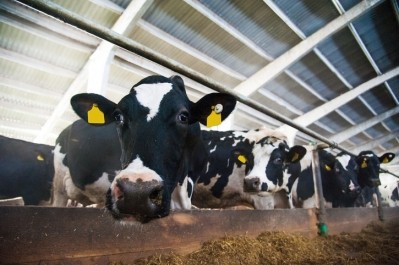'Trade deals crucial for agriculture trade between Canada and US'

The US Department of Agriculture (USDA) released details regarding aspects of the trade relationship between both countries on Monday.
Total export value for food and agricultural product from the US to Canada was more than $20bn, said the department. Among the top products exported were animal proteins.
“In addition to large companies, many of the US exporters are small- and medium-sized businesses for which shipments to Canada represent their first export opportunity,” the department added in the trade report.
Export growth
One of the factors supporting the growth of the export market between the US and Canada has been trade agreements, said the department. In 2017, two-way trade for both countries was almost $43bn.
“Over the last three decades, the main reason for strong increases in trade with Canada was the passage of the US-Canada Free Trade Agreement in 1988, followed by the North American Free Trade Agreement (NAFTA) in 1994.
"These trade agreements eliminated nearly all tariffs on US exports to Canada, significantly improving export opportunities for US producers.”
Integrated supply chains saw more than $825m in agricultural products travel between both countries every week, the department said. These include animals, specialized ingredients and other agricultural goods.
Canadian feed grain production
The USDA Foreign Agricultural Service also supplied a report from Erin Danielson, agricultural specialist, looking at production of some of Canada’s feed grains and protein meals.
Internally, in marketing year (MY) 2017/18 Canada expanded the amount of area planted with canola beyond what was planted in wheat, for the first time, she noted.
The projection is for a larger area to be planted in canola for the 2018/19 marketing year based on returns.
However, the overall production of canola, soybeans and sunflower seeds in marketing year 2018/19 is anticipated to decline from 2017/18 based on reduced yields for canola more than offsetting increases in area seeded, she said.
Total oilseed exports also are projected to drop with tighter supplies.
Oilseed crush in 2018/19 is forecast to be high, but consistent at 11.3m metric tons (MMT), she said.
Although there may be an uptick in soybean crush and oilseed meal production is expected to increase.
“FAS/Ottawa is forecasting total MY 2018/19 protein meal consumption (canola meal, soy meal, sunflower seed meal, and full-fat soybeans) to rise 7%, on a soymeal equivalent basis, to 3 MMT on expanded livestock production,” said Danielson in the report. “Total oilseed meals and oils exports in MY 2018/19 are expected to remain unchanged.”
Transportation challenges have been creating difficulties for the movement, export and delivery of the feed grains and ingredients, she said. “Increasingly vocal Canadian agricultural associations and their members are using the disruption to highlight the importance of and to shape the final content of proposed transportation legislation,” she added.
Additionally, the country is anticipating eventual upcoming change for its export markets outside of the US, based on trade agreements and interest in feed ingredients from Asia, she said.
“Canada signed the Comprehensive and Progressive Agreement for Trans-Pacific Partnership (CPTPP) on March 8, 2018,” she added.
“Legislation to enact the agreement is expected to pass later this year with an entry-into-force date anticipated in late 2018 or early 2019,” said the agricultural specialist. “CPTPP will expand Canada’s access to valuable oilseed oil markets across the Asia-Pacific region, growing value-added oilseed processing in Canada and altering Canadian oilseed and products export composition in the years ahead.”
Canola exports are forecast to grow 4% in 2017/18 especially to markets in Asia like China and Japan, she said. Soybean exports are anticipated to grow especially based on demand from China.
“Soybean exports to China increased 55% in MY 2016/17 over the previous year, and are expected to continue to grow in order to meet a soaring appetite for soy meal in animal feed. “Not only are the volume of pigs, poultry and farmed fish increasing in number, but soy feeds processed in China are replacing other protein sources such as canola products and distillers dried grains with solubles (DDGS).”
However, the US is anticipated to remain a strong market for canola meal, which is often used as a feed ingredient for the dairy sector, she said.












